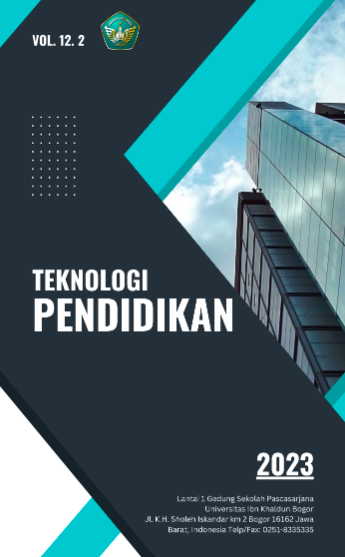DEVELOPMENT OF MOTION GRAPH ABLUTION PROCEDURES BASED ON THE CURRICULUM OF THE QUR'AN EDUCATION PARK IN PHASE A CHILDREN AT THE HOUSE OF QUR'AN DHIYAA AL FATIH DEPOK 2023
DOI:
https://doi.org/10.32832/tek.pend.v12i2.14709Abstract
This study aims to analyze: 1) Produce learning media for ablution procedures based on the curriculum of the Qur'an education park in phase A children, 2) Analyze product feasibility and 3) Know the effectiveness of product development.
This research method is a development research or also called Research and Development (R & D). This research, using 4D model development and integrated with Borg and Gall. In the feasibility test using an assessment by three experts, namely learning design experts 81.84%, media experts 94.87% and material experts 100% all in the very feasible category. While the results of the effectiveness test were obtained from the comparison of the results of the assessment of ablution procedure material in phase A children with the number of samples in each class, namely 10 samples. In the experimental class, namely learning with motion graphs, ablution procedures based on the curriculum of the Qur'an education park and control classes, learning without using motion graphs, ablution procedures based on the Qur'an education park. Statistical analysis using an independent sample t test with a calculated value of > ttable or 4.245>2.101 at a signification level of 5% and df = 18, then H0 was rejected and Ha was accepted, namely learning with motion graphs of Qur'an education garden-based ablution procedures in phase A children had an effect on the learning outcomes of ablution procedures specifically.
Downloads
Published
How to Cite
Issue
Section
License

This work is licensed under a Creative Commons Attribution-NonCommercial 4.0 International License.



















